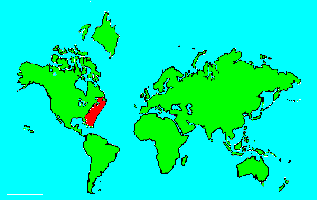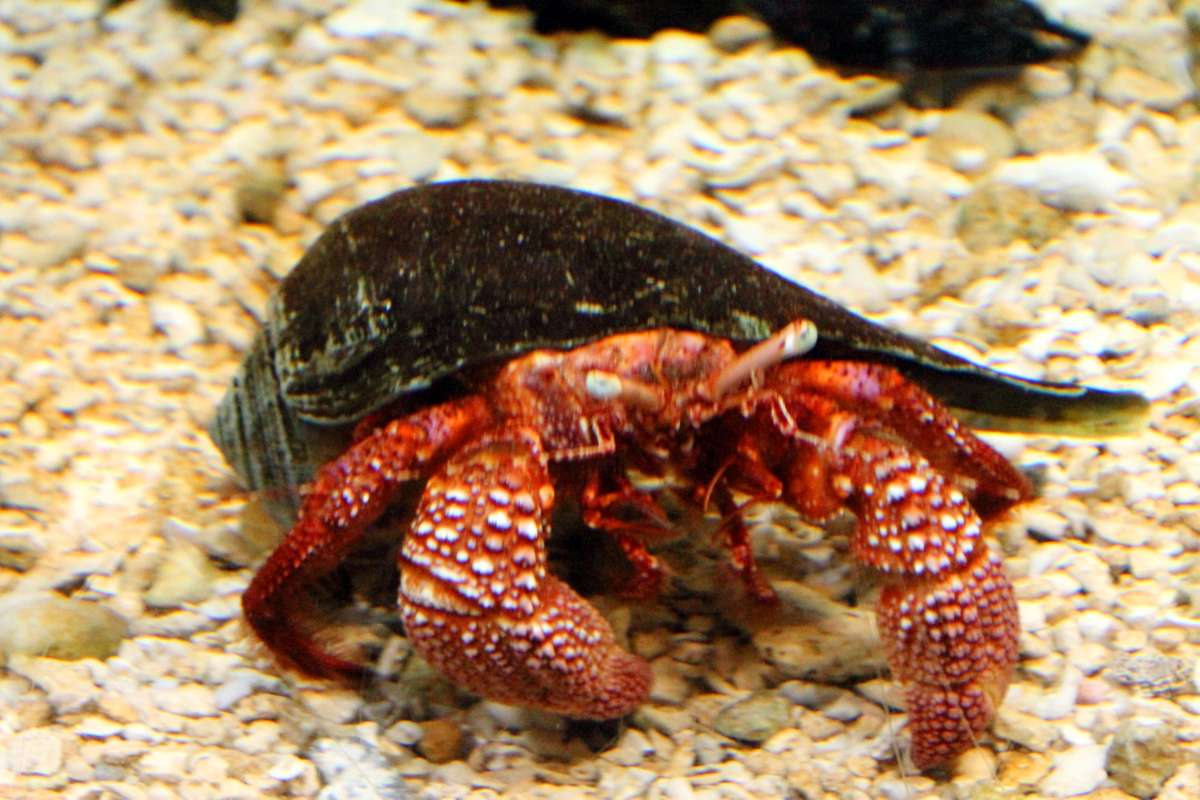SPECIES INFO
Red hermit crabs (perhaps Pagurus pollicares or perhaps Paguristes cadenati) are difficult to separate without better textual materials. Pagurus pollicares is pink with a claw coverd with tubercles. Paguristes cadenati is red, and is found from Florida and the Bahamas to the West Indies. If we were to hazard a guess, we would suppose this might be Paguristes cadenati.Hermit Crabs (Family Paguridae) is closely related to the Diogenidae Family. Both belong to the section Paguridea.
Hermit Crabs and Relatives (DecapodaNomura Section) contains the Hermit Crabs, mudshrimp and their relatives.
Shrimps and Crabs (Order Decapoda) contains most of the larger freshwater and marine species of crabs, crayfish, shrimp, and lobsters. They have a total of ten pairs of legs, four pairs of which are used for walking. Frequently the first pair of legs has been modified into pinchers used for eating and defense.
The following list divides the Decapoda into five different suborders that match their adult shapes:
Natantia - Shrimp-like
Brachyura - Crab-like
Anomura - Hermit Crabs and relatives
Astacidea - Crayfish and Lobster-like
Palinura - Spiny Lobsters and Spanish Lobster
The sub-classification of the Order Decapoda is in a state of change. For a short summary of this situation, please refer to pages two and three of Shrimps, Lobsters, and Crabs of the Atlantic Coast of the Eastern United States by Austin Williams published by the Smithsonian Press, Washington, D.C., in l984. If one uses adult shape for classification, one gets one organization, and if one uses larvae shape for classification, one gets a different organization.
Crustaceans (Class Crustacea) is a large class of mostly aquatic animals. Although many species are marine, there is a large number of small freshwater species and a few species of larger freshwater crayfish. There are many subdivisions to the Crustacea including such diverse animals as water fleas, fish lice, barnacles, crabs, shrimp, and crayfish. There are probably over 26,000 species in this class.
Jointed Legged Animals (Phylum Arthropoda) make up the largest phylum. There are probably more than one million different species of arthropods known to science. It is also the most successful animal phylum in terms of the total number of living organisms.
Butterflies, beetles, grasshoppers, various insects, spiders, and crabs are well-known arthropods.
The phylum is usually broken into the following five main classes:
Arachnida: - Spiders and Scorpions
Crustacea: - Crabs and Crayfish
Chilopoda: - Centipedes
Diplopoda: - Millipedes
Insecta: - Insects
There are several other "rare" classes in the arthropods that should be mentioned. A more formal list is as follows:
Sub Phylum Chelicerata
C. Arachnida: - Spiders and scorpions
C. Pycnogonida: - Sea spiders (500 species)
C. Merostomata: - Mostly fossil species
Sub Phylum Mandibulata
C. Crustacea: - Crabs and crayfish
Myriapod Group
C. Chilopoda: - Centipedes
C. Diplopoda: - Millipedes
C. Pauropoda: - Tiny millipede-like
C. Symphyla: - Garden centipedes
Insect Group
C. Insecta: - Insects
The above list does not include some extinct classes of Arthropods such as the Trilobites.
Animal Kingdom contains numerous organisms that feed on other animals or plants. Included in the animal kingdom are the lower marine invertebrates such as sponges and corals, the jointed legged animals such as insects and spiders, and the backboned animals such as fish, amphibians, reptiles, birds, and mammals.


